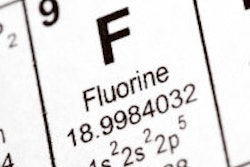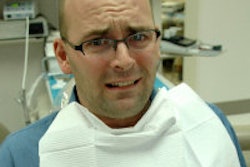
Higher fluoride concentrations are necessary when controlling caries of the root dentine versus those in the enamel, according to a new study from researchers from Brazil and published in PLOS One.
The study aimed to validate a cariogenic biofilm model that would evaluate the effect of fluoride on both enamel and root dentine under simultaneous conditions of demineralization.
"The findings support the clinical data, suggesting that higher fluoride concentrations are necessary to control caries of root dentine than of enamel," wrote lead study author Constanza Fernández and colleagues (PLOS One, January 5, 2016).
Biofilm model
While both enamel and root dentine are at risk of developing caries because of gingival recession, there is not a validated model to evaluate the effect of fluoride on these substrates at the same time, according to the researchers from the department of physiological sciences at the University of Campinas Piracicaba Dental School.
“The findings support the clinical data, suggesting that higher fluoride concentrations are necessary to control caries of root dentine than of enamel.”
They adapted a biofilm model that estimates the anticaries effect of substances on enamel and dentine. Streptococcus mutans biofilms were formed on bovine enamel and root dentine slabs for 96 hours. These slabs were exposed to 10% sucrose eight times a day. They were also exposed to fluoride twice a day at different doses: 0, 150, 450, or 1,350 parts per million (ppm). These concentrations simulated the use of toothpaste with low- to high-fluoride concentrations, the authors noted.
After the 96 hours, the researchers separately collected the biofilm that had formed on the enamel and root dentine slabs. These were analyzed for wet biofilm weight and soluble and bound-fluoride concentration, according to the authors. The slabs' surface hardness loss (%SHL) also was evaluated as a demineralization indicator. As an indicator of the fluoride effect on the process of de- and remineralization, the researchers also determined fluoride uptake by enamel and root dentine.
The 450 ppm of fluoride produced a 60% reduction in demineralization of enamel, while this same effect was obtained in dentine with 1,350 ppm, the authors noted. They explained that dentine is considered more susceptible to caries than enamel.
| Reduction (%) of enamel and root dentine demineralization | ||
| Treatment (ppm F) |
Reduction of demineralization (%) | |
| Enamel vs. control | Dentine vs. control | |
| 0 (control) | - | - |
| 150 | 46.8 | 21.3 |
| 450 | 60.9 | 36.9 |
| 1,350 | 76.1 | 58.8 |
"Our findings suggest that three times more fluoride concentration would be necessary for dentine in order to achieve the same effect on percentage of reduction of demineralization as in enamel," the authors wrote.
They noted a "dose response effect" for both dental substrates with "a negative linear relationship between %SHL and fluoride concentrations of the treatments." The highest demineralization (p < 0.05) was found for the nonfluoride treatment group, either for enamel or dentine.
Fluoride in the biofilm formed on dentine and fluoride uptake by dentine were higher than those for enamel. With the same fluoride concentration treatment, the percentage of reduction of demineralization was lower for dentine than for enamel.
Demineralization was consistently higher in dentine than in enamel (p < 0.05) for all groups. A dose-response effect was observed for both dental substrates and higher fluoride concentration was found in dentine than enamel (p < 0.05).
"Thus, assuming the effect of fluoride on dentine was equivalent to that on enamel, dentine would have to be treated with fluoride concentration three times higher than enamel, 1,350 vs. 450 ppm F," the authors wrote.
Root and enamel caries
Regarding possible limitations, the authors readily noted that the use of a single specie biofilm could be considered a limitation. Their defense was that, as there are "hundreds of bacterial species" in a dental biofilm, it would be "impossible to simulate this complexity in vitro."
They noted that their model was developed for one reason, "to evaluate the effect of fluoride on root and enamel caries."
"S. mutans is considered the most cariogenic bacteria in dental biofilm and it presents unique properties to metabolize sucrose, the most cariogenic dietary carbohydrate," they wrote.



















